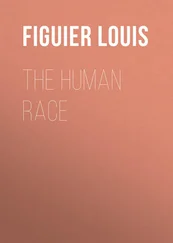Michael Cremo - Forbidden Archeology - The Hidden History of the Human Race
Здесь есть возможность читать онлайн «Michael Cremo - Forbidden Archeology - The Hidden History of the Human Race» весь текст электронной книги совершенно бесплатно (целиком полную версию без сокращений). В некоторых случаях можно слушать аудио, скачать через торрент в формате fb2 и присутствует краткое содержание. Год выпуска: 1992, ISBN: 1992, Издательство: Torchlight Publishing, Жанр: Старинная литература, на английском языке. Описание произведения, (предисловие) а так же отзывы посетителей доступны на портале библиотеки ЛибКат.
- Название:Forbidden Archeology: The Hidden History of the Human Race
- Автор:
- Издательство:Torchlight Publishing
- Жанр:
- Год:1992
- ISBN:9780892132942
- Рейтинг книги:4 / 5. Голосов: 1
-
Избранное:Добавить в избранное
- Отзывы:
-
Ваша оценка:
- 80
- 1
- 2
- 3
- 4
- 5
Forbidden Archeology: The Hidden History of the Human Race: краткое содержание, описание и аннотация
Предлагаем к чтению аннотацию, описание, краткое содержание или предисловие (зависит от того, что написал сам автор книги «Forbidden Archeology: The Hidden History of the Human Race»). Если вы не нашли необходимую информацию о книге — напишите в комментариях, мы постараемся отыскать её.
Forbidden Archeology: The Hidden History of the Human Race — читать онлайн бесплатно полную книгу (весь текст) целиком
Ниже представлен текст книги, разбитый по страницам. Система сохранения места последней прочитанной страницы, позволяет с удобством читать онлайн бесплатно книгу «Forbidden Archeology: The Hidden History of the Human Race», без необходимости каждый раз заново искать на чём Вы остановились. Поставьте закладку, и сможете в любой момент перейти на страницу, на которой закончили чтение.
Интервал:
Закладка:
2.4 Val D’arno, Italy (early Pleistocene or late Pliocene)
Specimens incised in a manner similar to those of St. Prest were found by Desnoyers in a collection of bones gathered from the valley of the Arno River (Val d’Arno) in Italy. The grooved bones were from the same types of animals found at St. Prest—including Elephas meridionalis and Rhinoceros etruscus. They were attributed to the Late Pliocene stage called the Astian (de Mortillet 1883, p. 47). This would yield a date of 2.0–2.5 million years. Some authorities (Harland et al. 1982, p. 110) put the Astian in the Middle Pliocene, at 3– 4 million years ago.
Modern scientists divide the fauna from the Val d’Arno into two groups— the Upper Valdarno and Lower Valdarno. The Upper Valdarno is assigned to the Late Villafranchian, which is given a quantitative date of 1.0–1.7 million years (Nilsson 1983, pp. 308–309). The Lower Valdarno is placed in the Early Villafranchian, or Late Pliocene, at around 2.0–2.5 million years ago (Nilsson 1983, pp. 308–309).
It is not clear to which group the incised bones reported by Desnoyers belong. But the fact that de Mortillet referred them to the Astian stage of the Late Pliocene seems to indicate that they might be assigned to the Lower Valdarno. On faunal grounds this would not be out of the question. We know that Elephas meridionalis occurs in the Lower Valdarno (Maglio 1973, p. 56). As mentioned in our discussion of St. Prest, Rhinoceros (Dicerorhinus) etruscus is reported in the Late Pliocene (Nilsson 1983, p. 475) in Europe, and even as far back as the Early Pliocene (Savage and Russell 1983, p. 339). De Mortillet listed Equus arnensis as present at Val d’Arno. Equus is typical of Pleistocene faunal assemblages, but examples of Equus are known from the Early Villafranchian (Kurtén 1968, p. 147), which is generally thought to extend into the Late Pliocene.
2.5 San Giovanni, Italy (late Pliocene)
In addition, grooved bones also were discovered in other parts of Italy. On September 20, 1865, at the meeting of the Italian Society of Natural Sciences at Spezzia, Professor Ramorino presented bones of extinct species of red deer and rhinoceros bearing what he believed were human incisions (de Mortillet 1883, pp. 47–48). These specimens were found at San Giovanni, in the vicinity of Siena, and like the Val d’Arno bones were said to be from the Astian stage of the Pliocene period. De Mortillet (1883, p. 48), not deviating from his standard negative opinion, stated that he thought the marks were most probably made by the tools of the workers who extracted the bones.
2.6 Rhinoceros of Billy, France (Middle Miocene)
On April 13, 1868, A. Laussedat informed the French Academy of Sciences that P. Bertrand had sent him two fragments of a lower jaw of a rhinoceros. They were from a pit near Billy, France. One of the fragments had four very deep grooves on it. These grooves, situated on the lower part of the bone, were approximately parallel and inclined at a 40-degree angle to the longitudinal axis of the bone. They were 1–2 centimeters (a half inch or so) in length, and the deepest was 6 mm (a quarter inch) in depth (Laussedat 1868, p. 752). According to Laussedat, the cut marks appeared in cross section like those made by a hatchet on a piece of hard wood. And so he thought the marks had been made in the same way, that is, with a handheld stone chopping instrument, when the bone was fresh. That indicated to Laussedat (1868, p. 753) that humans had been contemporary with the fossil rhino in a geologically remote time.
Just how remote is shown by the fact that the jawbone was found in a calcareous sand stratum at a depth of 8 meters (26 feet), in between other strata of the Mayencian age of the Middle Miocene. Furthermore, the incised jawbone was from a species, Rhinoceros pleuroceros, judged by Laussedat to be characteristic of the Early Miocene. According to modern authorities (Savage and Russell 1983, p. 214), Rhinoceros (Dicerorhinus) pleuroceros occurs in the Agenian land mammal age of the Early Miocene.
At the meeting of the Academy of Sciences, Mr. Hebert asked if one could be sure of the authenticity of the incisions on the fossil. Edouard Lartet responded with a demonstration that the marks, the surfaces of which had the same appearance as the other parts of the bone, indeed dated from the time of burial (de Mortillet 1883, p. 49).
By what agency were the marks produced? De Mortillet (1883, p. 50) rejected straightaway the idea of gnawing by carnivores, because the incisions did not display the appropriate characteristics. Animal gnawing tends to be accompanied by significant destruction of the bone, whereas the rhinoceros jawbone from Billy bore only the four rather clear incisions. Were they produced by human beings? De Mortillet thought not. The imprints of a stone edge used as a saw are easily recognizable, and there were no traces of sawing on the bone. Because of their irregular edges, cutting instruments of stone generally leave small striations along the longitudinal axis of the V-shaped groove produced. But on the markings of the Billy fossil the striations were said to be transverse to this axis, i.e., running from the top of the cut, vertically down to the bottom of the groove. Furthermore, the marks on the jawbone were wider and deeper than might be expected from the action of a thin stone blade drawn across the bone.
De Mortillet thought the marks were not produced by a stone chopping instrument as proposed by Laussedat. The blow of a stone handaxe, according to de Mortillet, leaves an imprint with rounded sides. The marks on the jawbone of Billy, however, were straight-sided, and could not, in the opinion of de Mortillet, have been the result of a stone hatchet blow. Furthermore, he noted that the mark of the blow of a hatchet is distinguished by a surface clean and sharp on the side hit by the blade, and abrupt and rough on the side from which the splinter of bone separates. In the imprints on the jaw of Billy, this feature was, said de Mortillet, absent (1883, p. 50).
What then had been the cause? De Mortillet, sticking to his usual explanation, wrote in Le Préhistorique (1883, pp. 50 –51): “They are simply geological impressions. All geologists know that there exist in many terrains, especially Miocene, rocks that have profound impressions on them. The cause is not easily recognized, but the fact that it has been observed is incontestable. There is a great similarity between the marks on some of these rocks and those on the jaw of Billy. I have collected at Tavel (Gard), and given to the museum of Saint-Germain, a quartzite rock, a very hard rock, bearing marks completely analogous to those on the specimen presented by Mr. Laussedat. On examining with care and at length this bone, one notices on one of the extremities a small impression produced by crushing. There is no removal of material, simply compression. This impression, which is of the same aspect as the other marks on the bone, is their contemporary and serves to explain them.”
About marks on stones from Miocene formations, de Mortillet, as mentioned above, admitted that “the cause is not easily recognized.” It is known that glaciers can groove bedrock, but this phenomenon is not applicable to grooved stones (or fossil bones) from preglacial Miocene formations. De Mortillet mentioned a grooved piece of quartzite. But quartzite is a very hard rock (7 on the Mohs scale of hardness, with talc at 1 and diamond at 10). It would thus require a harder mineral, which de Mortillet did not name, and extreme pressure, which de Mortillet did not explain, to mark quartzite with deep grooves. One must also consider the possibility that grooves in quartzite might be caused by chemical corrosion and recrystallization rather than cutting.
Читать дальшеИнтервал:
Закладка:
Похожие книги на «Forbidden Archeology: The Hidden History of the Human Race»
Представляем Вашему вниманию похожие книги на «Forbidden Archeology: The Hidden History of the Human Race» списком для выбора. Мы отобрали схожую по названию и смыслу литературу в надежде предоставить читателям больше вариантов отыскать новые, интересные, ещё непрочитанные произведения.
Обсуждение, отзывы о книге «Forbidden Archeology: The Hidden History of the Human Race» и просто собственные мнения читателей. Оставьте ваши комментарии, напишите, что Вы думаете о произведении, его смысле или главных героях. Укажите что конкретно понравилось, а что нет, и почему Вы так считаете.












